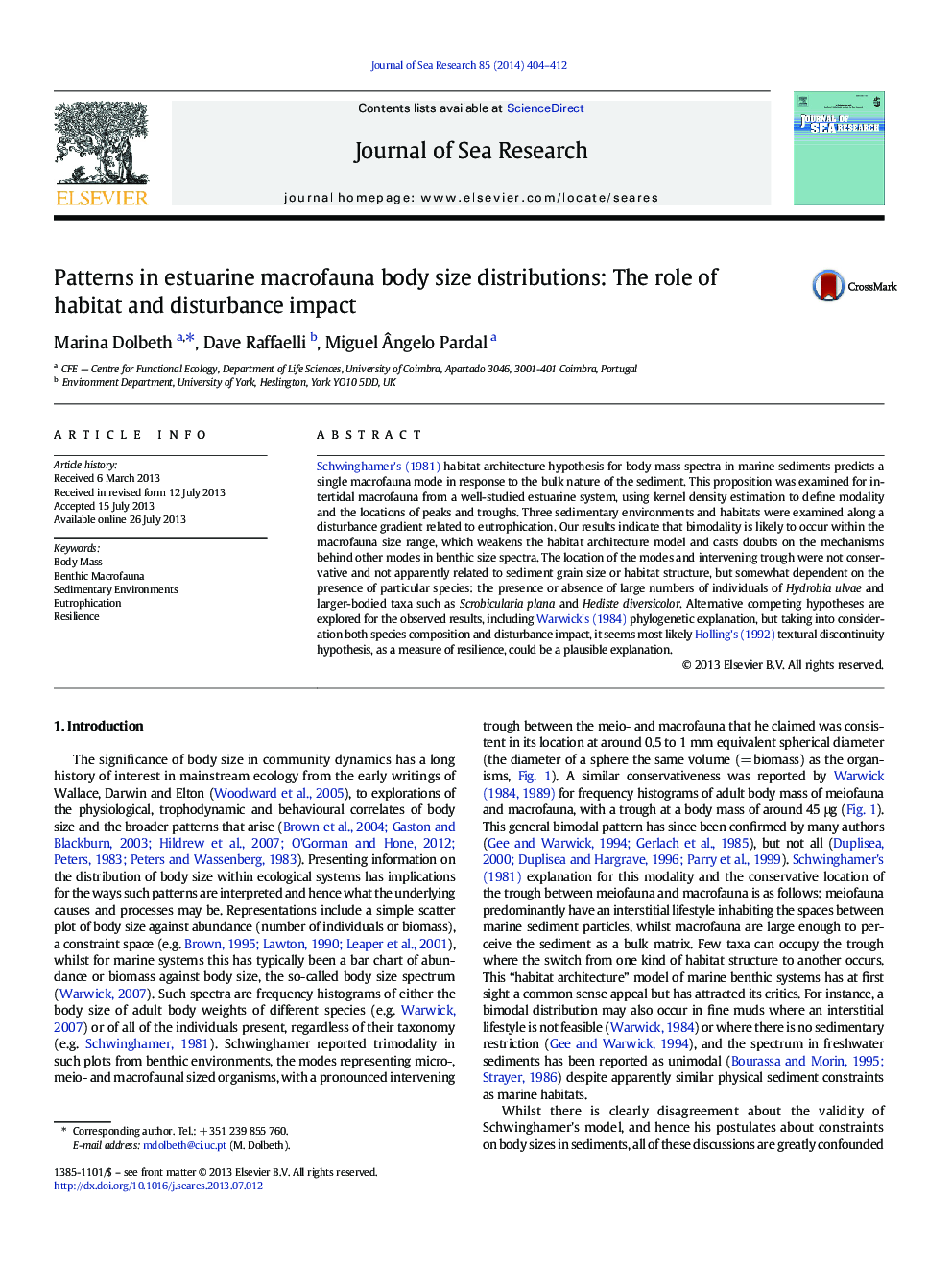| Article ID | Journal | Published Year | Pages | File Type |
|---|---|---|---|---|
| 6387429 | Journal of Sea Research | 2014 | 9 Pages |
Abstract
Schwinghamer's (1981) habitat architecture hypothesis for body mass spectra in marine sediments predicts a single macrofauna mode in response to the bulk nature of the sediment. This proposition was examined for intertidal macrofauna from a well-studied estuarine system, using kernel density estimation to define modality and the locations of peaks and troughs. Three sedimentary environments and habitats were examined along a disturbance gradient related to eutrophication. Our results indicate that bimodality is likely to occur within the macrofauna size range, which weakens the habitat architecture model and casts doubts on the mechanisms behind other modes in benthic size spectra. The location of the modes and intervening trough were not conservative and not apparently related to sediment grain size or habitat structure, but somewhat dependent on the presence of particular species: the presence or absence of large numbers of individuals of Hydrobia ulvae and larger-bodied taxa such as Scrobicularia plana and Hediste diversicolor. Alternative competing hypotheses are explored for the observed results, including Warwick's (1984) phylogenetic explanation, but taking into consideration both species composition and disturbance impact, it seems most likely Holling's (1992) textural discontinuity hypothesis, as a measure of resilience, could be a plausible explanation.
Related Topics
Physical Sciences and Engineering
Earth and Planetary Sciences
Oceanography
Authors
Marina Dolbeth, Dave Raffaelli, Miguel Ãngelo Pardal,
